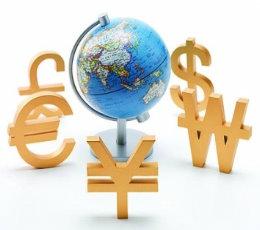
US Capital Markets:
The US capital market is the largest and the system is the most complex. There are five national stock exchange markets in the United States. Companies, big or small, have the opportunity to list financing with the support of investment banks. Judging from the current development of the US capital market, although there are many different levels of securities and equity trading markets, each has its own specific characteristics and market positioning. As the world's largest capital market, the United States has capital capacity and liquidity that cannot be compared with other markets. Its development stage also determines that it has the strongest capital operation capability, and the stock price changes are more active.
There are two options for Chinese companies to list in the US: the New York Stock Exchange and the NASDAQ Stock Exchange. The NYSE is mainly for large-scale enterprises with mature and good performance, so the listing threshold is relatively high. Nasdaq has a relatively low threshold and thus has better market adaptability and a more diverse structure of participants.
In the US, IPO (initial public offering), RTO (reverse takeover), and ADR (ADR) are common listing methods, but the entire procedural process of the US IPO plus pre-negotiations and roadshows is roughly one year. And the cost is more expensive, the average cost is about 1.5 million US dollars. In addition, the US investment banks currently entering China are members of the first echelon such as Merrill Lynch and Morgan Stanley. It is difficult for medium-sized Chinese companies to pass the screening requirements for enterprises.
Advantages: sufficient funds, good liquidity, low shell cost and a clean shell.
Disadvantages: The IPO cost is high, and the cultural background is very different, which makes the Chinese enterprise market low.
Singapore Capital Market:
Listed companies in the Singapore market are dominated by manufacturing and high-tech companies, especially in newly listed foreign companies, with a manufacturing sector accounting for more than 50%. The total market capitalization of the Singapore trading market is one-third of the Hong Kong market. Therefore, although its trading value is only 1/2 of that of the Hong Kong market, it is 1/3 of the market capacity to complete 1/2 of the trading volume. In fact, the Singapore market The activity is higher than Hong Kong.
The allotment and issuance of the secondary market of the Singapore Exchange is also very active. The market rules in Singapore are relatively loosely formulated. If there is a refinancing requirement within 6 months of listing, the company can communicate with the exchange and then finance. The secondary financing is not only cheaper but also has a shorter cycle. Many companies have successfully refinanced after listing, which has more opportunities than the initial listing.
Advantages: low barriers to second board, low cost of listing, short time to market, and small differences in language and culture.
Disadvantages: The scale is relatively small, and domestic companies lack understanding of their markets.
UK Capital Markets:
The UK market is dominated by the London Stock Exchange (main board market) and AIM (the national second board market). One-third of the members of the London Stock Exchange are controlled by foreign capital, and most of the world's leading big banks and securities firms are members of the London International Stock Exchange.
Listing on the Main Board generally requires a three-year operating record and must report the total auditing project for the last three years. If there is no three-year operating record, some technology industry companies, investment entities, mining companies and companies undertaking major infrastructure projects, As long as it can meet the relevant standards in the Stock Exchange's Listing Rules, it can also be listed. For international offerings through the London Stock Exchange, its total share capital is generally required to be no less than £25 million.
AIM is equivalent to China's GEM market, and the listing conditions are much looser than the main board. For Chinese companies, listing on AIM usually includes the following conditions: it is best to have a three-year operating history, the last two years of profit (net profit after tax), and is growing; the net profit after tax for the most recent fiscal year is More than 30 million yuan; enterprises have a certain industry status; enterprises have a certain international status; system, standardized operational management system; perfect corporate governance system, including the board of directors (external directors), the board of supervisors, the audit supervision committee, etc.; There are no profit requirements for technology companies, biotechnology companies and mining companies.
Advantages: The London Stock Exchange is the third largest exchange in the world. Stock holders can realize stocks at any time with good liquidity and high turnover rate.
Disadvantages: It is more synchronized with the US stock market and is vulnerable to events and market drivers.
Japanese capital market:
Japan's exchanges are divided into three levels: national trading centers, regional securities trading centers, and over-the-counter markets. The Tokyo Stock Exchange is the main board market of the Japanese stock market. It has the nature of a national central market. The listed companies are famous big companies. Other exchanges such as Osaka and Nagoya constitute regional securities trading centers. The main transactions are not yet available. Conditions to the securities listed on the Tokyo Stock Exchange, these regional markets constitute Japan's second board market; the over-the-counter market includes the storefront securities market and the storefront stock market, the companies in this transaction are small, but very There are development prospects, in which the bond market in the storefront market accounts for the vast majority of Japanese stock exchanges.
Advantages: Small business opportunities, high price-earnings ratio, and convenient and flexible financing after listing.
Disadvantages: Stock prices are almost manipulated by foreign investment institutions. Foreign transactions are frequent, fast-forward and fast-moving, and bring liquidity to the market while also bringing volatility to the market.
Hong Kong Capital Markets:
Hong Kong is the closest source of financing to the mainland and is the preferred place for companies to seek overseas listings for a long time. Hong Kong investors have a high awareness of Chinese companies. Together with Hong Kong's most active secondary market speculators in the world, Hong Kong's capital market has good liquidity, and usually high-quality Chinese companies are moving in the Hong Kong market. Sex is very satisfying.
Under normal circumstances, the entire IPO process in Hong Kong takes about 7 months, but due to the irregular operation of some private enterprises, the Exchange has strengthened the cautiousness of approval. At the same time, there are too many Chinese companies to declare Hong Kong listings, which greatly prolongs the time and reduces the success rate. The initial listing fee in Hong Kong is HK$15-65 million for the main board and HK$100-200,000 for the GEM, plus the commissions for sponsors and underwriters, and related financial laws and publicity for professional promotion, totaling more than HK$1 million. However, if it is a reverse takeover, Hong Kong's shell costs are higher, the main board is about 50 million Hong Kong dollars, the GEM is about 20-30 million Hong Kong dollars, and capital injection is more difficult. Overall, although listing in Hong Kong has a geographical advantage, the cost is relatively high.
Advantages: The market is large in scale, good in liquidity, and good for Chinese companies.
Disadvantages: high listing costs, high shell costs and not a clean shell.
Canadian Capital Markets:
A listed company in Canada must establish an audit committee of at least three members. The audit committee system is the cornerstone of corporate governance and financial reporting. It involves a large number of overseas operations. The members of the audit committee should be familiar with Canadian securities law knowledge and financial reporting requirements and be familiar with the language and customs duties of the overseas business location.
Companies listed on the TSX Main Board (TSX) are required to sell at least $1 million in freely tradeable stock at the time of listing, with a total market capitalization of $4 million. The stock must be held by at least 300 Canadian public shareholders. Each shareholder holds one or more shares of the trading unit.
The TSX Venture Exchange Board (TSXV) requires its listing company to issue at least 500,000 freely tradeable shares, and the total market capitalization of the public share should be $500,000. In the application process, the company needs to let the TSX Venture Exchange Board (TSXV) believe that at least 10% of its issued shares at the time of listing are freely traded and held by the public at least 200 public shareholders, each shareholder All of them hold one or more stocks of trading units without resale restrictions, and the public shareholding is at least 20%.
Advantages: Wide range of financing channels, different listing rules for companies in different industries, suitable for listed companies in different stages of growth.
Disadvantages: high liquidity, high turnover rate, resulting in large fluctuations.
Australian Capital Markets:
Australia is one of the most important and highly developed capital markets in the Asia Pacific region, attracting a large number of investors from all over the world and having an internationally competitive business environment.
The Australian Capital Market currently has more than 2,300 listed companies covering a wide range of industries and industries. The Australian capital market has strong financing capabilities and is considered one of the leading markets for initial and subsequent financing. In terms of free float market capitalization, Australia has the world's third largest pool of investable funds, with assets under management of more than 1.7 trillion Australian dollars.
During the five years from 2008 to 2013, the Australian Stock Exchange (ASX) listed issuers issued the fourth highest number of securities financing in the world. According to Bloomberg, the ASX ASX became the New York Stock Exchange (New York). Stock Exchange), the world's fourth largest stock exchange after the London Stock Exchange and the Hong Kong Stock Exchange, with financing capabilities on the Nasdaq, 2008 to 2013 6 In the month, the total amount of continuous financing for 5 years reached 291 billion US dollars.
Companies listed in Australia cover a wide range of industries, including energy, finance, consumption, and high-tech industries. These companies have different company scales and development stages, from leading companies in the industry to high-growth companies in the initial stage.
At the same time, the Australian capital market is a highly mature capital market with extremely high liquidity. The total market transactions and the average total market value show that the liquidity of the Australian market has tripled since 2000.
Advantages and disadvantage of seven capital markets
2015-10-20 11:26


